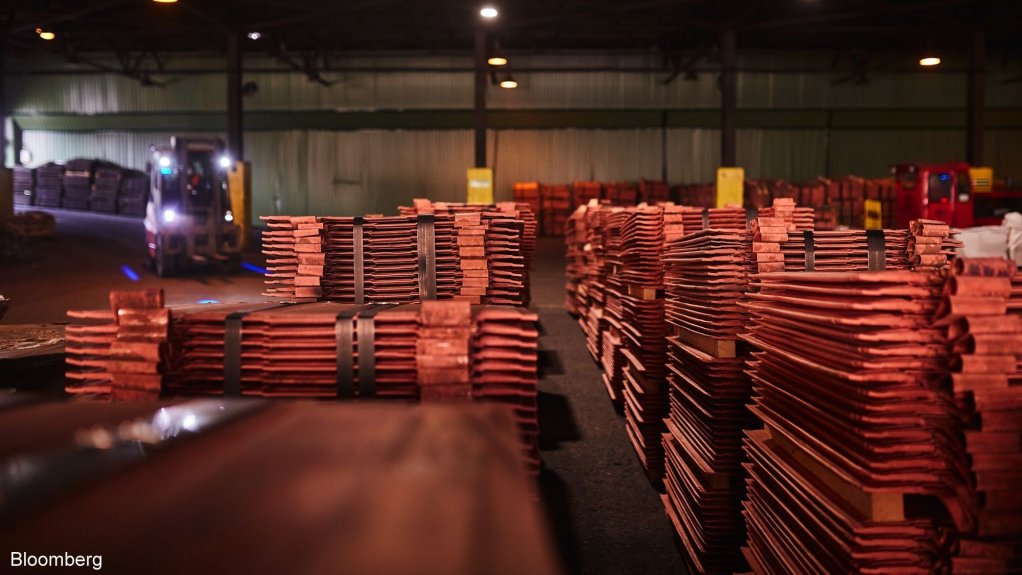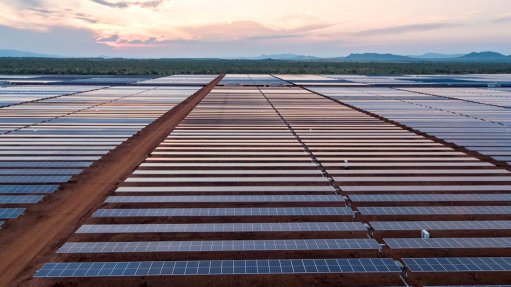BHP's economic analysis prepares for US recession
PERTH (miningweekly.com) – China is expected to remain the mainstay of diversified miner BHP’s future plans, but the miner has raised concerns around a possible recession in the US and other developed markets within the shorter term.
BHP VP for market analysis and economics Dr Huw McKay said that a recession in the US and other developed markets was "within the range of possibilities" being considered by BHP.
“Our base case for calendar 2023 is that for the US, avoiding a sharp rise in involuntary unemployment, the key marker of a recession, is a manageable task. Europe on the other hand faces a more troubling constellation of negative factors, including sovereign debt risks as bond yields rise, as well as an energy crisis. In the developing world ex-China, tighter financial conditions alongside rising prices for food and fuel presage challenges, especially for those regions where depreciated exchange rates, high foreign debt and balance of payments challenges have led to a loss of monetary independence,” McKay said.
For China, the picture is mixed, with both upside and downside risks to consider, he added.
“On the downside, the possibility of further lockdowns interrupting growth cannot be counted out whilst there is an immunity gap in the population and the zero-Covid stratagem remains in place. Exports are also likely to slow.
“On the positive side, substantial policy support for growth has been put in place, dating back to late in calendar 2021, and this is already showing through in sectors like autos and infrastructure. As ever though, the test will be how the real estate sector responds.
“On balance, we feel confident enough to say that at a minimum China will be a source of stability over the coming year. And perhaps something much more than that if the supply side of the property industry is effectively de–bottlenecked,” McKay added.
For 2023, BHP believed that weighted directional risks to annual average prices across its diversified portfolio would be balanced or tilted modestly downwards, a view which McKay said relied in part on the lower starting point created by substantial price depreciation already observed in the financial year to date.
“These developments have highlighted the intrinsic vulnerability of 'fly-up' pricing to modest improvements in supply conditions or material changes in demand conditions, whether actual or expected.
“Beyond the slowdown in ex-China demand, the observed turn in the Chinese policy cycle, ongoing two-way uncertainty as to FSU trade flows, a range of operational challenges across key mining jurisdictions and the fact that operating cost curves have moved higher and steepened amid the global inflation shock, are all relevant considerations for thinking about how near-term prices might develop. Notably, industry-wide cost inflation has raised real-time price support well above pre-pandemic levels in many of the commodities in which we operate,” McKay said.
He noted that the lag effect of these inflationary pressures was expected to remain a challenge in the 2023 financial year, with labour market tightness and energy markets now edging ahead of manufacturing supply chain and logistics constraints as the most pressing forward-looking concerns.
“We expect the supply-demand balance to move out of deficit in both copper and nickel, with supply conditions improving, more so in nickel, in both commodities just as demand in the ex-China world is coming off the boil, more so in copper, and the ex-China slowdown is occurring before Chinese policy easing has fully delivered its intended impact.
“Iron-ore moved into a considerable surplus in the first half of financial year 2022, before tightening somewhat in the second half. On balance, it seems likely to be in surplus across financial 2023. On the supply side, that view assumes a stronger aggregate operational performance by the seaborne majors than we have observed in recent history, as well as a pick–up in the availability of ferrous scrap.
“Metallurgical coal prices achieved all-time records in the second half of financial year 2022 on strong ex-China demand and multi-regional, multi-causal supply disruptions. These 'fly-up' prices partially unravelled early in financial 2023, as some sources of disruption faded and ex-China steel markets softened noticeably in the face of broader macroeconomic headwinds.
“Chinese import policies remain a key uncertainty for both metallurgical and energy coal. The latter commodity also ascended to record highs in financial 2022, with supply constraints in the major export nodes coinciding with strong demand conditions. The balance is expected to remain tight at least through the forthcoming northern hemisphere winter, with energy security issues paramount.”
McKay noted that potash prices escalated rapidly in the second half of financial 2022 on the credible threat of outright physical scarcity. Strong farm economics coupled with the loss of shipments from Belarus and, to a lesser extent, Russia created the veritable perfect storm, he added.
“The regional price structure at the close of financial 2022 is obviously susceptible to any sign of a return to more normal levels of total FSU exports. Even so, with crop prices also elevated, potash affordability, while stretched, is nowhere near as bad as it was at the peak of the last major price upswing.”
Looking beyond the immediate picture to the medium term, BHP said that there would be a need for additional supply, both new and replacement, to be induced across many of the sectors in which we operate.
McKay noted that after a multi-year period of adjustment in which demand rebalances and supply recalibrates to the unique circumstances created by Covid-19, the war in Ukraine, and the global inflationary shock, BHP anticipated that geologically higher-cost production would be required to enter the supply stack in BHP’s preferred growth commodities as the decade proceeds.
“The projected secular steepening of some industry cost curves that we monitor, which may be amplified as resource nationalism, supply chain diversification and localisation, carbon pricing and other forms of 'greenflation' become more influential themes in both demand and supply centres, can reasonably be expected to reward disciplined and sustainable owner-operators with higher quality assets featuring embedded, capital-efficient optionality.
“We confidently state that the basic elements of our positive long-term view remain in place,” said McKay.
He noted that population growth, urbanisation, the infrastructure of decarbonisation and rising living standards are all expected to drive demand for steel, non-ferrous metals, and fertilisers for decades to come.
Comments
Press Office
Announcements
What's On
Subscribe to improve your user experience...
Option 1 (equivalent of R125 a month):
Receive a weekly copy of Creamer Media's Engineering News & Mining Weekly magazine
(print copy for those in South Africa and e-magazine for those outside of South Africa)
Receive daily email newsletters
Access to full search results
Access archive of magazine back copies
Access to Projects in Progress
Access to ONE Research Report of your choice in PDF format
Option 2 (equivalent of R375 a month):
All benefits from Option 1
PLUS
Access to Creamer Media's Research Channel Africa for ALL Research Reports, in PDF format, on various industrial and mining sectors
including Electricity; Water; Energy Transition; Hydrogen; Roads, Rail and Ports; Coal; Gold; Platinum; Battery Metals; etc.
Already a subscriber?
Forgotten your password?
Receive weekly copy of Creamer Media's Engineering News & Mining Weekly magazine (print copy for those in South Africa and e-magazine for those outside of South Africa)
➕
Recieve daily email newsletters
➕
Access to full search results
➕
Access archive of magazine back copies
➕
Access to Projects in Progress
➕
Access to ONE Research Report of your choice in PDF format
RESEARCH CHANNEL AFRICA
R4500 (equivalent of R375 a month)
SUBSCRIBEAll benefits from Option 1
➕
Access to Creamer Media's Research Channel Africa for ALL Research Reports on various industrial and mining sectors, in PDF format, including on:
Electricity
➕
Water
➕
Energy Transition
➕
Hydrogen
➕
Roads, Rail and Ports
➕
Coal
➕
Gold
➕
Platinum
➕
Battery Metals
➕
etc.
Receive all benefits from Option 1 or Option 2 delivered to numerous people at your company
➕
Multiple User names and Passwords for simultaneous log-ins
➕
Intranet integration access to all in your organisation





















